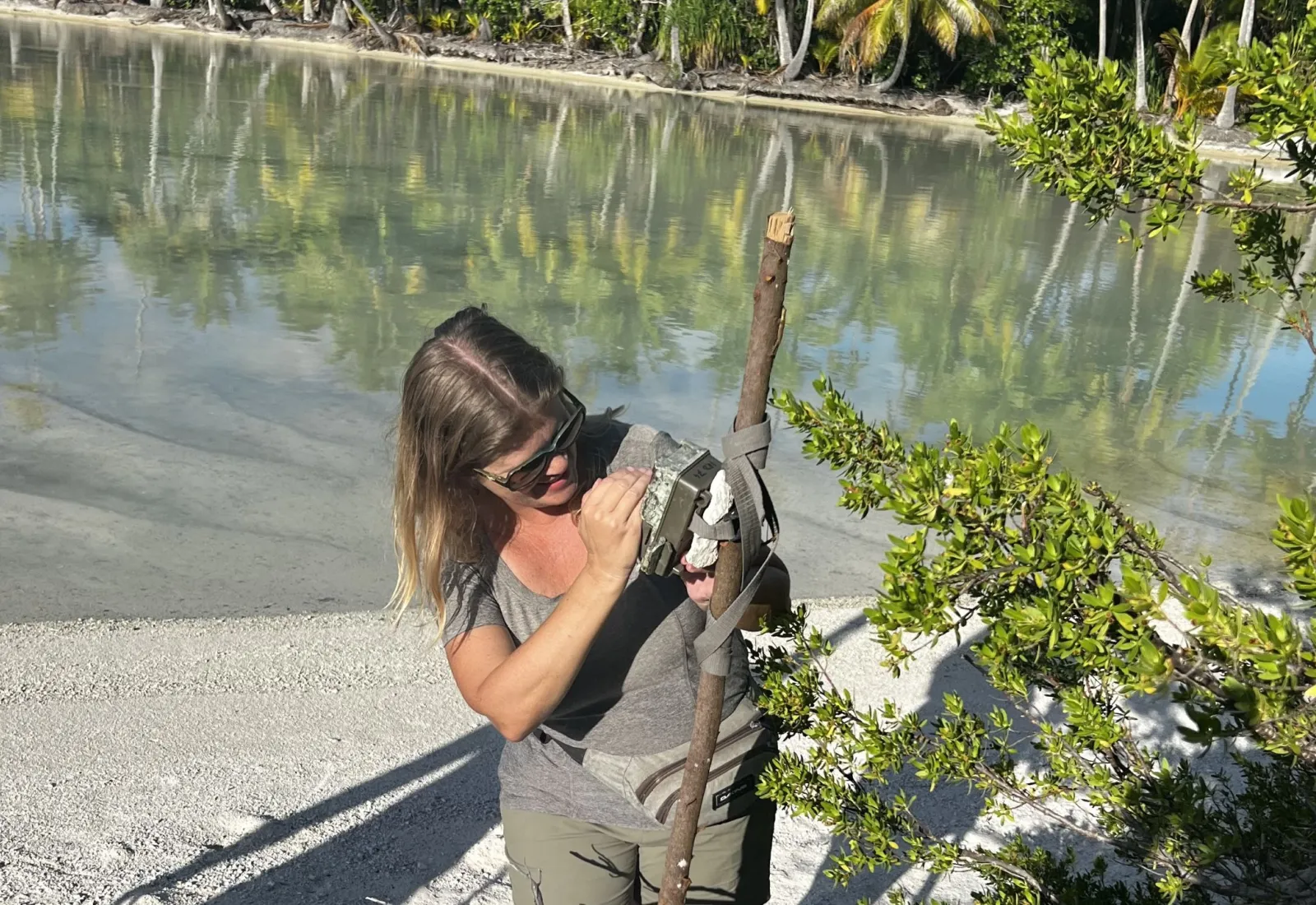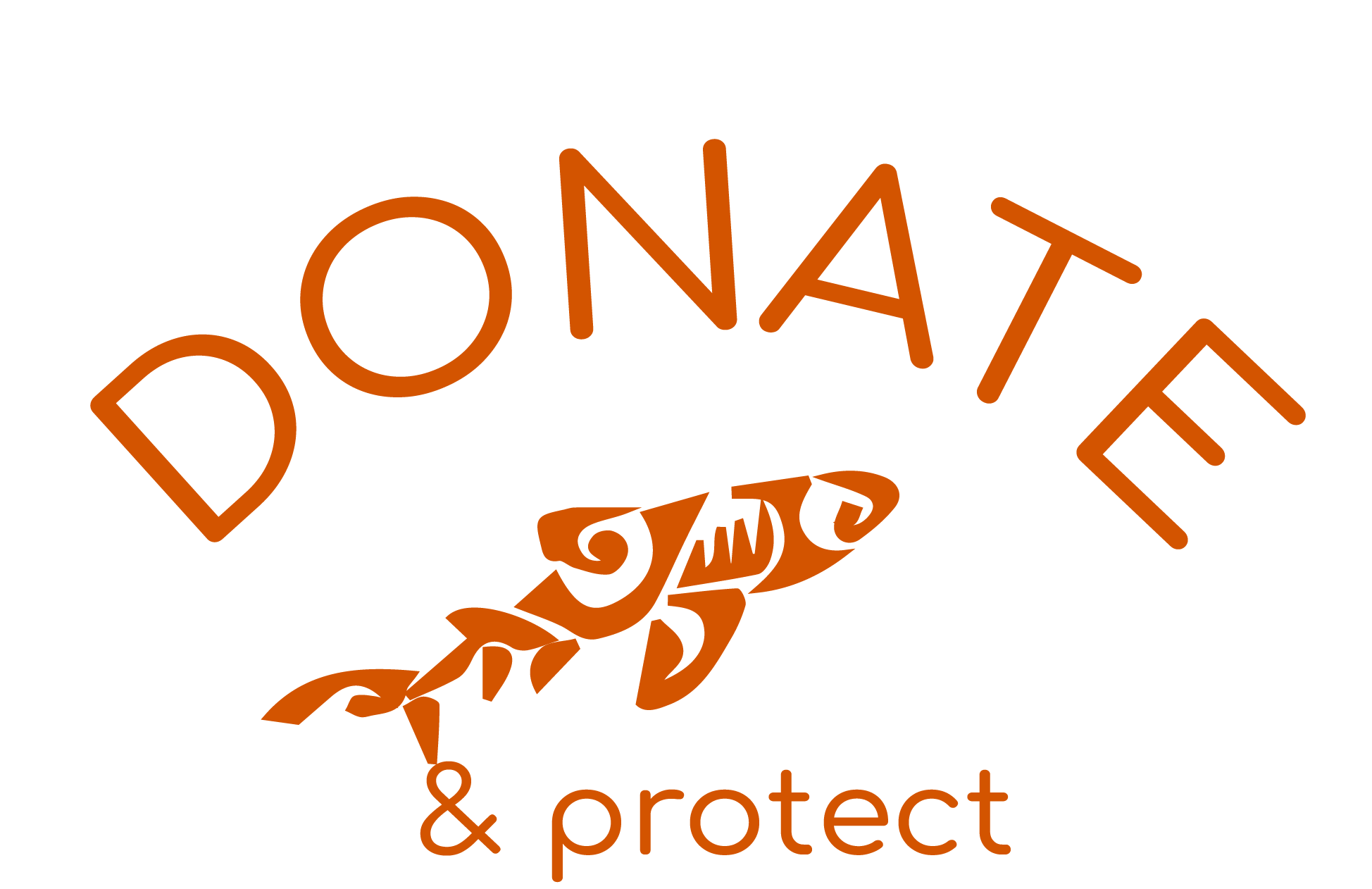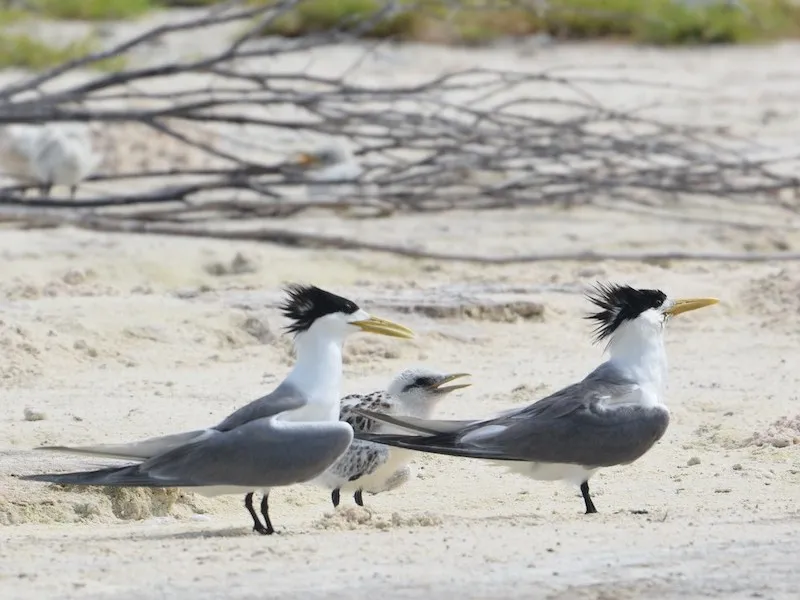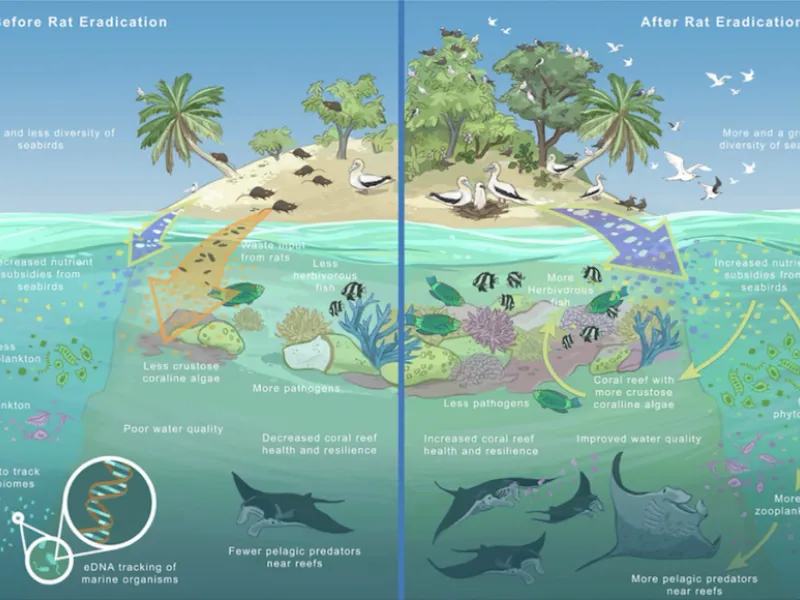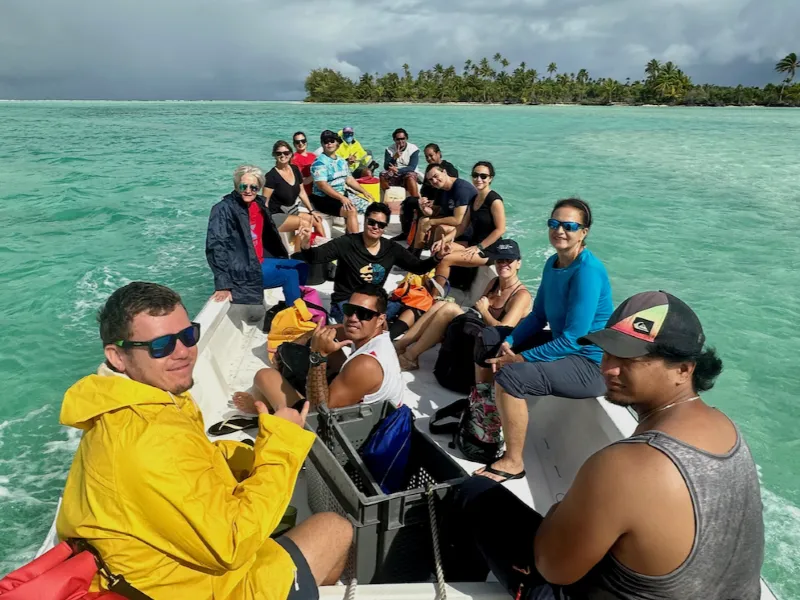The researchers are interested in the complex ecological interactions between these components: the role of seabirds in nitrogen enrichment of soils according to seasons and locations, the ecological functions performed by land crabs in decomposing litter or dispersing seeds, and how these balances change after the elimination of invasive species. The main objective is to assess, in the medium and long term, whether rat eradication allows for natural recolonization by seabirds and a resumption of essential ecological roles by land crabs. This monitoring should also allow for a better understanding of how these two groups together contribute to the functioning and resilience of island ecosystems.
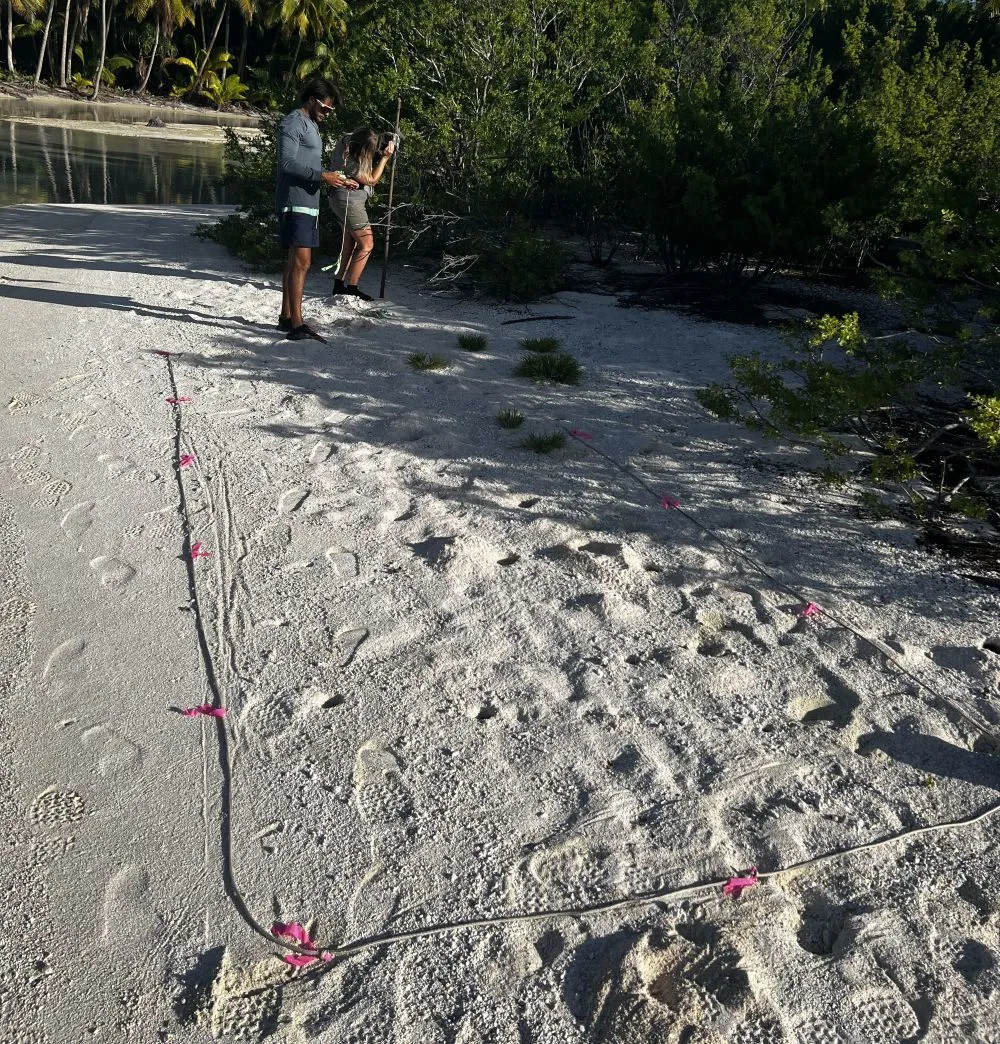
Summary of field activities
Two main missions were carried out in July and late August 2025, bringing together three researchers in the field. These campaigns aimed to ensure post-eradication monitoring of crabs, seabirds and vegetation on several motu of the atoll. In July, the team conducted capture-mark-recapture sessions of crabs on six beaches to estimate population sizes and analyze the morphology of the different species. These surveys, initiated before the 2022 eradication, now make it possible to measure the changes observed since the disappearance of the rats, particularly among ghost crabs. At the same time, the vegetation was characterized along 25 kilometers of coastal transects used since 2021 for monitoring seabirds. The researchers also carried out maintenance on the camera traps—replacing batteries and SD cards—used to monitor the reproduction of the main seabird species, including red-footed boobies, lesser and Pacific frigatebirds, gray-backed terns, brown noddies, sooty terns, masked boobies, and great crested terns.
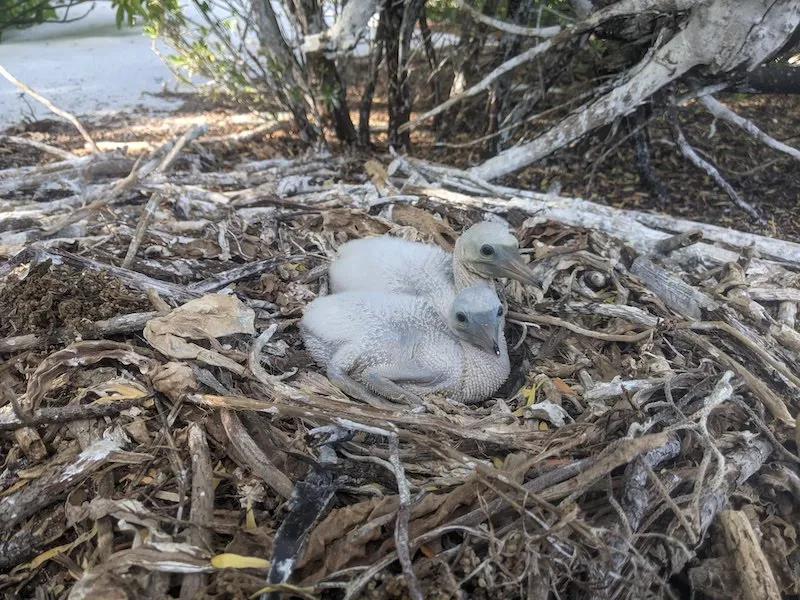
Camera traps were also installed on the sampled beaches, and acoustic recordings were made for two species of ghost crabs. During the late August mission, vegetation characterization was completed along the last ten kilometers of coastal transects. The researchers recovered the camera traps installed in July and continued monitoring brown booby nests, in collaboration with the team of B. Gardner and S. Converse from the University of Washington. Sites were selected for the ATTRACT program, and several nighttime capture sessions documented the morphology of ghost crabs on two beaches, including one at Tiaraunu, to expand the comparative database. These observations complete a coherent set of ecological monitoring designed to measure the rapid response of terrestrial fauna to the disappearance of introduced predators.
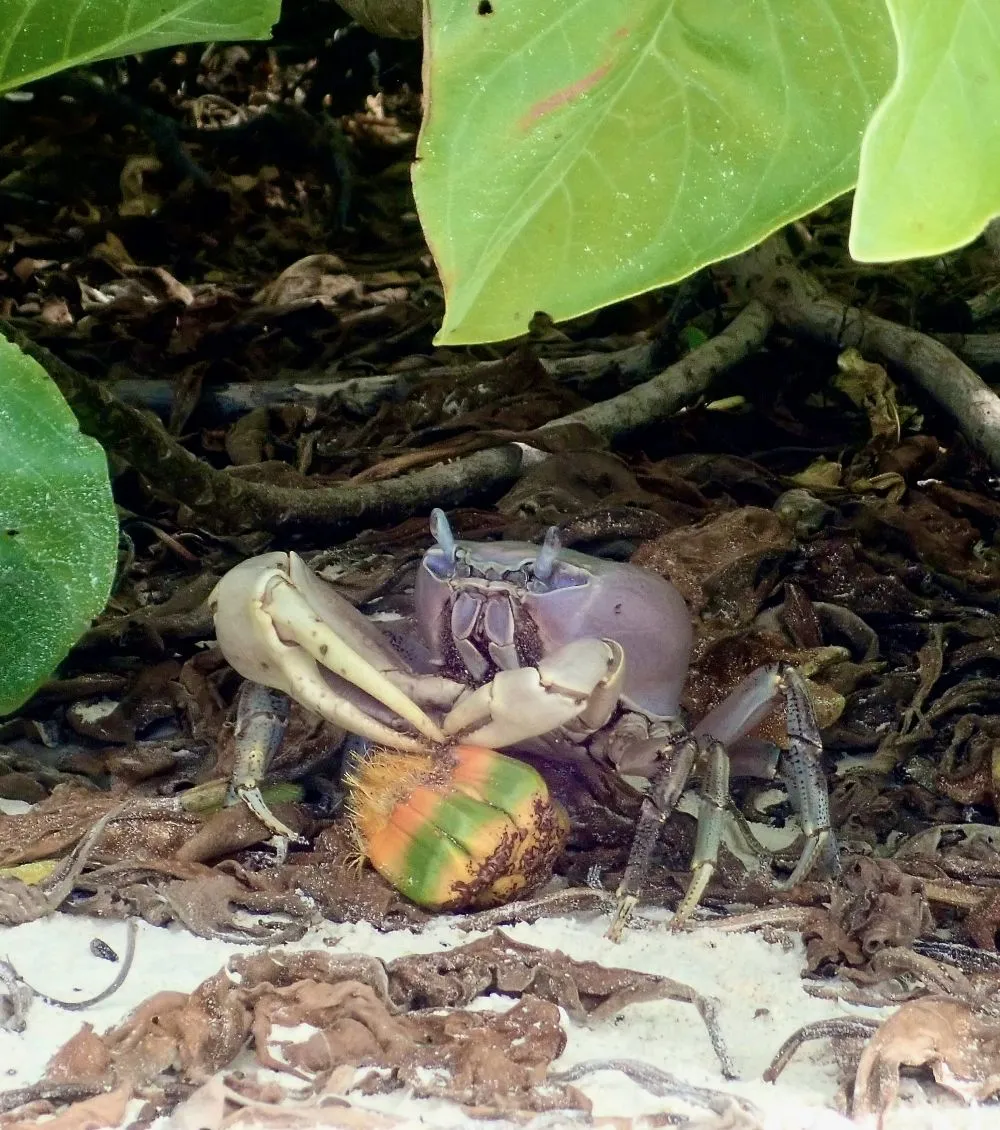
Impacts and preliminary results
Initial results confirm a very positive evolution of terrestrial communities on motu cleared of rats. The diversity and abundance of crabs have increased significantly, particularly on islets where black rats were previously present. This rapid recolonization illustrates the central role of crabs in soil rehabilitation and the resumption of natural ecological cycles. Among seabirds, several encouraging signs have been observed. A pair of masked boobies successfully bred again, and the chick observed in August was healthy and about to fledge. This reproductive success demonstrates a gradual return to favorable nesting conditions and supports the idea that restoring terrestrial ecosystems directly benefits the marine species that depend on them. These preliminary results suggest that the eradication of rats on Tetiaroa has already led to a significant revitalization of terrestrial ecological networks, and that prolonged monitoring will allow us to better quantify the magnitude and stability of these changes.
Perspectives
The work continues with several complementary research areas. Monitoring the reproductive success of seabirds will continue thanks to the network of camera traps deployed in the colonies. At the same time, Michaël's thesis, currently underway as part of the project, focuses on the functioning of post-eradication ecological interactions: tahinu flowering, leaf dispersal by crabs, and characterization of plant-pollinator networks.
A new mission is planned for the end of October 2025, primarily to welcome two teams of journalists wishing to document the ecological effects of the restoration of Tetiaroa. This mission will also be an opportunity to check and replace the SD cards and batteries of the automatic cameras installed on the seabird colonies. All of this work is part of the long-term program aimed at monitoring the ecological trajectory of the motu and better understanding the resilience processes of island ecosystems after the eradication of invasive species.


